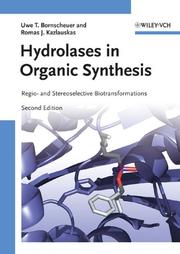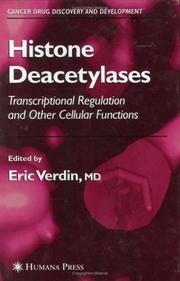| Listing 1 - 3 of 3 |
Sort by
|
Book
Year: 2006 Publisher: Bruxelles: UCL,
Abstract | Keywords | Export | Availability | Bookmark
 Loading...
Loading...Choose an application
- Reference Manager
- EndNote
- RefWorks (Direct export to RefWorks)
These last years, the elucidation of the physiological roles of the anandamide and the 2-arachidonoylglycérol, two endogenous molecules derived from the arachidonic acid, made it possible to highlight a system of neurotransmission called endocannabinoid system. Among the known enzymes of the endocannabinoid system, MonoGlycerol Lipase (MGL) is one of the less characterised. It is a serine hydrolase which is responsible for the degradation of the major endocannabinoid in the central nervous system, the 2-arachidonoylglycerol (2-AG). Several studies highlighted the pharmacological properties of 2-AG, like the inhibition of the proliferation of cancerous cells of breast and prostate, the stimulation of appetite, and a neuroprotector effect following central lesions. To block the MGL would make it possible to increase the rates of 2-AG and by there, to benefit from its pharmacological properties from the therapeutic point of view such as cancer, neuroprotection and anxiety. Nevertheless, few inhibitors of MGL are known to date. My studies consist on the screening of a library of various molecules in a hydrolysis assay of a radiolabelled substrate (2-oleoylglycérol, 2-OG) by the recombining MGL human in order to identify possible inhibitors of MGL and to highlight structure-activity relationships. Secondly, to appreciate the inhibition of active compound discovered by screening, the curves of inhibition have been realized. The pIC50 of several compounds have been determined and vary between 4,46 and 6,45. In a third time, the most potent compound of each groups were tested on intact glioma cells. This last evaluation, has been realized to know if these compound were able to modify the metabolism of 2-OG by intact cells. These different steps performed to identify three groups of chemical structures favourable for the inhibition of MGL: thioamides, phenyl maleimides and disulfides. Ces dernières années, l’élucidation des rôles physiologiques de l’anandamide et du 2-arachidonoylglycérol, deux molécules endogènes dérivées de l’acide arachidonique, a permis de mettre en évidence un système de neurotransmission appelé système endocannabinoïde. Parmi les enzymes connues du système endocannabinoïde, la Monoglycérol Lipase (MGL) est une des moins caractérisées. Il s’agit d’une sérine hydrolase responsable de la dégradation de l’endocannabinoïde majeur dans le système nerveux central, le 2-arachidonoylglycérol (2-AG). Les propriétés pharmacologiques de ce dernier comprennent l’inhibition de la prolifération des cellules cancéreuses du sein et de la prostate, la stimulation de l’appétit et un effet neuroprotecteur suite à des lésions centrales. La MGL dégrade le 2-AG par clivage de son lien ester donnant respectivement le glycérol et l’acide arachidonique. Bloquer la MGL permettrait d’augmenter les taux de 2-AG et par là, profiter de ses propriétés pharmacologiques dans des perspectives thérapeutiques tels que le cancer, la neuroprotection et l’anxiété. Néanmoins, peu d’inhibiteurs de la MGL sont connus à ce jour. C’est dans ce contexte de recherche que s’inscrit mon mémoire. Il consiste au criblage d’une librairie de molécules chimiques dans un test d’hydrolyse d’un substrat radiomarqué (le 2-oléoylglycérol, 2-OG) par la MGL recombinante humaine afin d’identifier d’éventuels inhibiteurs et de tenter de mettre en évidence un lien entre structure et activité. Trois groupes de structures ont été identifiés parmi la large chimiothèque testée. Deuxièmement, afin d’apprécier la puissance des composés les plus actifs, des courbes de détermination d’IC50 ont été réalisées. Les pIC50 de plusieurs composés sont ainsi connus et varient entre 4,46 et 6,45. Dans un troisième temps, les composés les plus puissants de chacun des trois groupes ont été testés sur des cultures de gliomes. Cette dernière évaluation a permis d’évaluer si ces composés étaient capables de modifier le métabolisme du 2-OG par les cellules intactes. Ces différentes étapes ont permis de mettre en évidence trois groupes de molécules présentant un squelette de base propice à l’inhibition de la MGL : les thioamides, les maléimides et les disulfides.
Lipase --- Cannabis --- Hydrolases --- Monoglycerides

ISBN: 3527310290 9783527310296 Year: 2006 Publisher: Weinheim: Wiley-VCH-Verl.,
Abstract | Keywords | Export | Availability | Bookmark
 Loading...
Loading...Choose an application
- Reference Manager
- EndNote
- RefWorks (Direct export to RefWorks)
Acqui 2006 --- Organic compounds --- Hydrolases --- Catalysis

ISBN: 9781588294999 1588294994 9781597450249 1617376027 9786610358526 1280358521 1597450243 Year: 2006 Publisher: Totowa, NJ : Humana Press : Imprint: Humana,
Abstract | Keywords | Export | Availability | Bookmark
 Loading...
Loading...Choose an application
- Reference Manager
- EndNote
- RefWorks (Direct export to RefWorks)
The recent discoveries that established histone acetylation as a key regulatory mechanism for gene expression triggered a wave of interest in histone posttranslational modifications and led to the development of novel anticancer agents now in clinical trials. In Histone Deacetylases: Transcriptional Regulation and Other Cellular Functions, a panel of leading investigators summarizes and synthesizes the new discoveries in this rapidly evolving field. The authors describe what has been learned about these proteins, including the identification of the enzymes, the elucidation of the enzymatic mechanisms of action, and the identification of their substrates and their partners. They also review the structures that have been solved for a number of enzymes-both alone and in complex with small-molecule inhibitors-and the biological roles of the several histone deacetylase (HDAC) genes that have been knocked out in mice. Authoritative and state-of-the-art, Histone Deacetylases: Transcriptional Regulation and Other Cellular Functions constitutes a first landmark of what has been accomplished so far and sets a clear agenda for the full definition of HDAC roles in biology and disease in the years to come.
Histone Deacetylases --- Cell Cycle --- Enzyme Repression --- Neoplasms --- Sirtuins --- Histone deacetylase. --- Cell cycle. --- Enzymes. --- Cancer --- Histone désacétylase --- Cycle cellulaire --- Enzymes --- physiology. --- drug effects. --- antagonists & inhibitors. --- drug therapy. --- Chemotherapy. --- Chimiothérapie --- Cancer -- Chemotherapy. --- Histone deacetylase --- Cell cycle --- Cell Physiological Processes --- Gene Expression Regulation, Enzymologic --- Enzyme Inhibitors --- ADP Ribose Transferases --- Amidohydrolases --- Group III Histone Deacetylases --- Biological Science Disciplines --- Intracellular Signaling Peptides and Proteins --- Diseases --- Therapeutics --- Analytical, Diagnostic and Therapeutic Techniques and Equipment --- Natural Science Disciplines --- Molecular Mechanisms of Pharmacological Action --- Pentosyltransferases --- Proteins --- Gene Expression Regulation --- Cell Physiological Phenomena --- Hydrolases --- Disciplines and Occupations --- Glycosyltransferases --- Amino Acids, Peptides, and Proteins --- Pharmacologic Actions --- Phenomena and Processes --- Genetic Processes --- Transferases --- Chemical Actions and Uses --- Enzymes and Coenzymes --- Genetic Phenomena --- Chemicals and Drugs --- Drug Therapy --- Histone Deacetylase Inhibitors --- Physiology --- Human Anatomy & Physiology --- Medicine --- Health & Biological Sciences --- Animal Biochemistry --- Oncology --- Chemotherapy --- Biocatalysts --- Ferments --- Soluble ferments --- Mitotic cycle --- Nuclear cycle (Cytology) --- Medicine. --- Cancer research. --- Biomedicine. --- Cancer Research. --- Antineoplastic agents --- Catalysts --- Enzymology --- Biological rhythms --- Amidases --- Treatment --- Oncology. --- Tumors --- Cancer research
| Listing 1 - 3 of 3 |
Sort by
|

 Search
Search Feedback
Feedback About
About Help
Help News
News